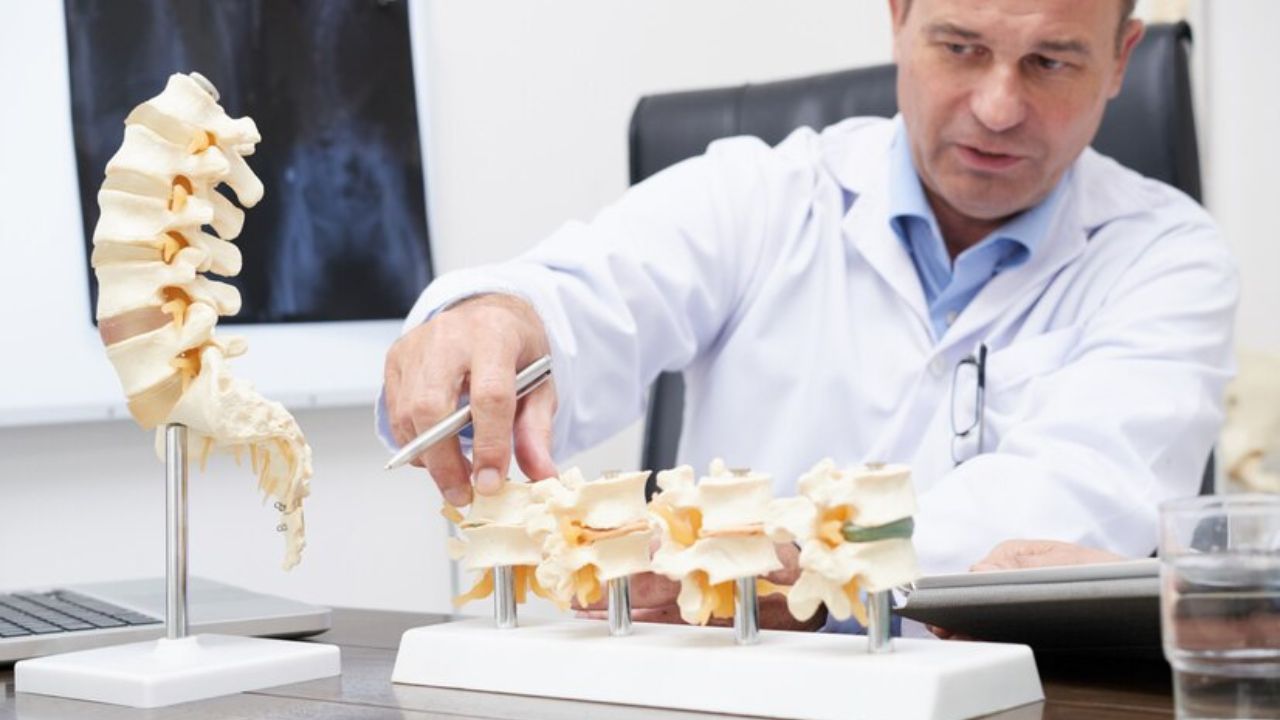Health
Disc Desiccation: Understanding, Symptoms, and Treatment
Published
5 years agoon

Millions of individuals all around the globe suffer from disc desiccation, a prevalent spinal ailment. To effectively manage and treat this ailment, it is essential to understand it. Because of the importance of spinal health to general health, it is critical to understand disc desiccation and its symptoms as well as the available treatments.
Anatomy of Spinal Discs
The spaces between each vertebra in the spine are cushioned by stretchy structures called spinal discs. They cushion the body’s joints and provide the spine the pliability and stability it needs. The structural integrity and function of these discs depend on their hydration.
Understanding Disc Desiccation
The gradual drying out and degradation of spinal discs over time is known as disc desiccation. Age, trauma, or just plain old spine wear and tear can all lead to this problem. Discomfort and pain are symptoms of disc dehydration, which makes the discs less efficient in cushioning the vertebrae.
Symptoms of Disc Desiccation
Back discomfort, stiffness, and reduced mobility are common indications of disc desiccation. Extreme instances can cause radiculopathy, in which pain travels down the body and into the limbs. Because of the difficulty these symptoms cause in performing even the most basic of everyday tasks, they can have a profound effect on a person’s quality of life.
Diagnosis of Disc Desiccation
Physical examinations, imaging studies (such as MRI or CT scans), and medical history are used to identify disc desiccation by medical specialists. The key to effectively treating the condition and stopping any spinal injury is early identification.
Treatment Options
Disc desiccation treatment options include non-invasive methods including physical therapy, medication, and behavioral changes. After non-invasive treatments have failed, a surgeon may suggest a discectomy or spinal fusion to fix the problem and get you back on your feet.
Prevention of Disc Desiccation
In order to keep your discs from drying up, it’s important to eat right, exercise regularly, and stay away from things that exert too much pressure on your spine. Additionally, you may lessen your chances of developing disc degeneration over time by consistently practicing excellent posture and ergonomic practices.
Managing Symptoms
Some people find that heat treatment, ice packs, or over-the-counter pain drugs help alleviate the symptoms of disc desiccation. Reducing pain and improving mobility in the spine are two additional goals of physical therapy and chiropractic treatment.
Alternative Therapies
In certain cases, people suffering with disc desiccation may find relief through alternative treatments including acupuncture, massage, and herbal supplements. Although further studies are required to demonstrate their efficacy, these alternative methods can enhance conventional medicine and promote health in general.
Long-term Outlook
Patients with disc desiccation’s have different prognoses in the long run based on how bad their disease is and how well therapy works. Many people can greatly improve their symptoms and keep their quality of life with the right treatment and lifestyle changes.
Impact on Quality of Life
There are many aspects of a person’s quality of life that can be negatively impacted by disc desiccation’s, including their physical, emotional, and mental health. Individuals can find assistance and guidance via therapy and support groups when they face the difficulties of living with chronic pain and disability.
Research and Innovation
Our knowledge of disc desiccation and the possibilities for treating it are constantly evolving as a result of new discoveries and developments in the area of spinal health. The future of spinal care is bright because to emerging technologies including less invasive procedures and regenerative medicine.
Case Studies
To better understand what it’s like to live with disc desiccation’s, real-life case studies are really helpful. By opening up about their experiences, these people may provide hope, strength, and guidance to those going through tough times.
Expert Insights
For advice on how to deal with disc desiccation’s, consult with doctors who focus on spinal health. Their knowledge and experience can help patients make educated choices regarding spinal health treatments and lifestyle changes.
Conclusion
Finally, disc desiccation is a prevalent spinal disorder that can greatly affect a person’s standard of living. Take charge of your spinal health and your health in general by learning about this issue and its symptoms, causes, and treatment choices. The naturally occurring process of disc desiccation involves the dehydration of your spinal discs, which are normally filled with fluid.
Frequently Asked Questions (FAQ’s)
Q: Can disc desiccation’s be reversed?
Disc desiccation’s cannot be reversed, but it may be managed with the right medication and lifestyle changes to reduce symptoms and stop the spine from getting worse.
Q: Is surgery always necessary for disc desiccation’s?
Disc desiccation’s surgery is usually reserved for the most extreme instances when non-invasive methods fail. There are many people who find that non-surgical methods help them deal with their problems.
Q: What are the risk factors for developing disc desiccation’s?
Factors that increase the likelihood of disc desiccation include advancing age, heredity, lifestyle choices, and a history of spinal injuries.
Q: How can I prevent disc desiccation’s?
Keeping to a healthy weight, engaging in regular physical activity, maintaining excellent posture, and not smoking are all factors that can help keep your spine healthy and prevent disc desiccation.
Q: Is disc desiccation the same as degenerative disc disease?
Disc desiccation’s is a common symptom of degenerative disc disease, which is an umbrella word for the changes that occur in spinal discs as a person ages.
You may like

Achieving Complete Computer Protection: Key Tips for Home Users

Common Questions About Plastic Surgery Prices in the U.S.: Trends, State Comparisons, and Important Considerations

Is Fmovies Safe? What You Need to Know Before Streaming

What You Need to Know About Police Brutality?

12 Sites to Watch Free Online TV Shows with Complete Episodes in 2024


